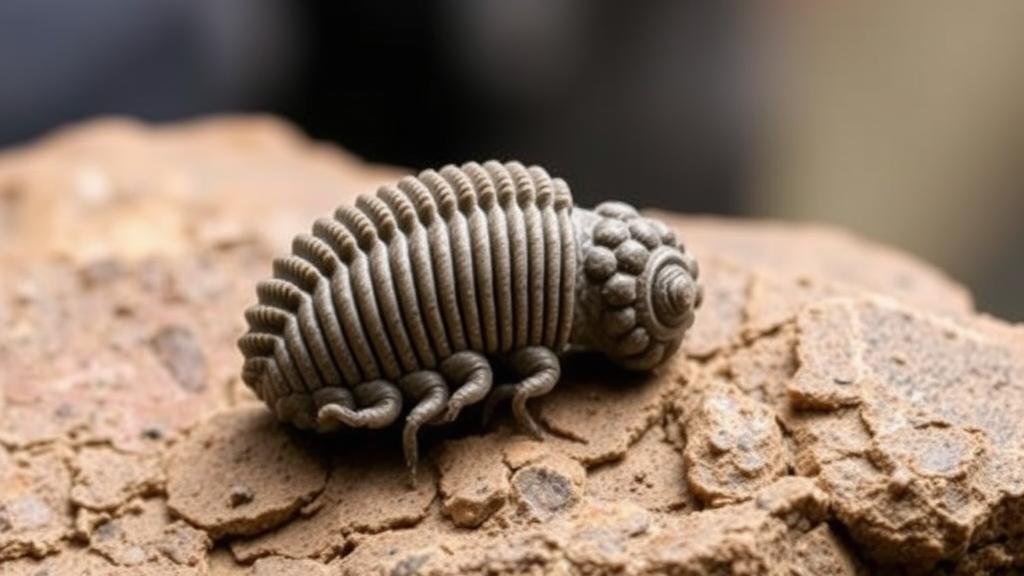The Journey of a Trilobite: Fossil Hunting in the Oldest Rock Layers
The Journey of a Trilobite: Fossil Hunting in the Oldest Rock Layers
Fossil hunting is a thrilling endeavor that offers a glimpse into the Earths ancient history, where creatures like trilobites roamed the oceans. For rockhounds and mineral collectors, seeking out trilobite fossils is both a hobby and a scientific journey that requires knowledge of geology, paleontology, and the best practices for ethical collecting. This article aims to guide collectors through the fascinating journey of trilobites, specifically focusing on where to find them in the oldest rock layers.
What Are Trilobites?
Trilobites are an extinct class of marine arthropods that first appeared over 520 million years ago during the Cambrian Period. thrived for approximately 270 million years before becoming extinct around 250 million years ago during the Permian-Triassic extinction event. Trilobites are known for their distinctive three-lobed, three-segmented bodies, which provide valuable insights into the evolutionary history of arthropods.
Why Hunt for Trilobite Fossils?
There are several compelling reasons why collectors are drawn to trilobite fossils:
- Historical Significance: Trilobites are considered one of the first complex life forms on Earth, serving as critical indicators for dating rock layers.
- Diversity: With more than 20,000 identified species, trilobites exhibit a vast range of morphology, color, and size, appealing to collectors diverse tastes.
- Educational Value: Collecting trilobites allows individuals to learn about ancient ecosystems, geology, and evolutionary processes.
Where to Find Trilobite Fossils
The quest for trilobite fossils often leads collectors to some of the oldest rock layers on Earth, primarily found in sedimentary deposits. Here are some prime locations:
- Appalachian Basin, USA: States like Pennsylvania and Alabama feature abundant trilobite fossils in Cambrian and Ordovician rock layers. Notable formations include the Conemaugh Group.
- Canadian Rockies, Canada: The Burgess Shale in British Columbia is famous for its well-preserved trilobite fossils and other Cambrian organisms.
- Morocco: The Anti-Atlas region is renowned for its rich deposits of trilobite fossils, often sold in markets and geological shows.
The Science of Fossil Identification
Identifying trilobite fossils requires an understanding of their anatomy and classification. Important features to consider include:
- Cephalon: The head section, which often contains distinctive eye structures that can be key identifiers.
- Thorax: The middle section composed of several segments, which can vary in number between species.
- Pygidium: The tail section, which may be simple or highly ornamented, providing clues to the species.
For collectors, utilizing resources such as field guides, online databases, or joining local rockhounding clubs can enhance identification skills. Participating in workshops or fossil fairs can also facilitate learning from fellow enthusiasts and experts in the field.
Ethical Collecting Practices
As a rockhound, responsible collecting practices are essential for preserving geological sites and ensuring future generations can enjoy natural history. Key principles to follow include:
- Permission: Always obtain permission to collect fossils from landowners or relevant authorities.
- Minimal Impact: Use tools responsibly, and avoid damaging the surrounding areas. Covering up your digging sites can help maintain ecological balance.
- Documentation: Record the location and geological context of your finds to contribute to scientific knowledge.
Real-World Applications and Takeaways
The journey of a trilobite is not only about collecting fossils; it’s about understanding our planets history and appreciating the diversity of life that has existed. Collectors can apply their knowledge in various ways:
- Contributing to local museums or educational programs by donating fossils or sharing knowledge.
- Engaging in community events that promote geological education and conservation.
To wrap up, the pursuit of trilobite fossils offers abundant opportunities for learning, discovery, and personal growth. By honing their skills in identifying fossils, practicing ethical collecting, and appreciating the rich history these fossils represent, rockhounds can enhance their journeys while preserving the integrity of the geological record.



